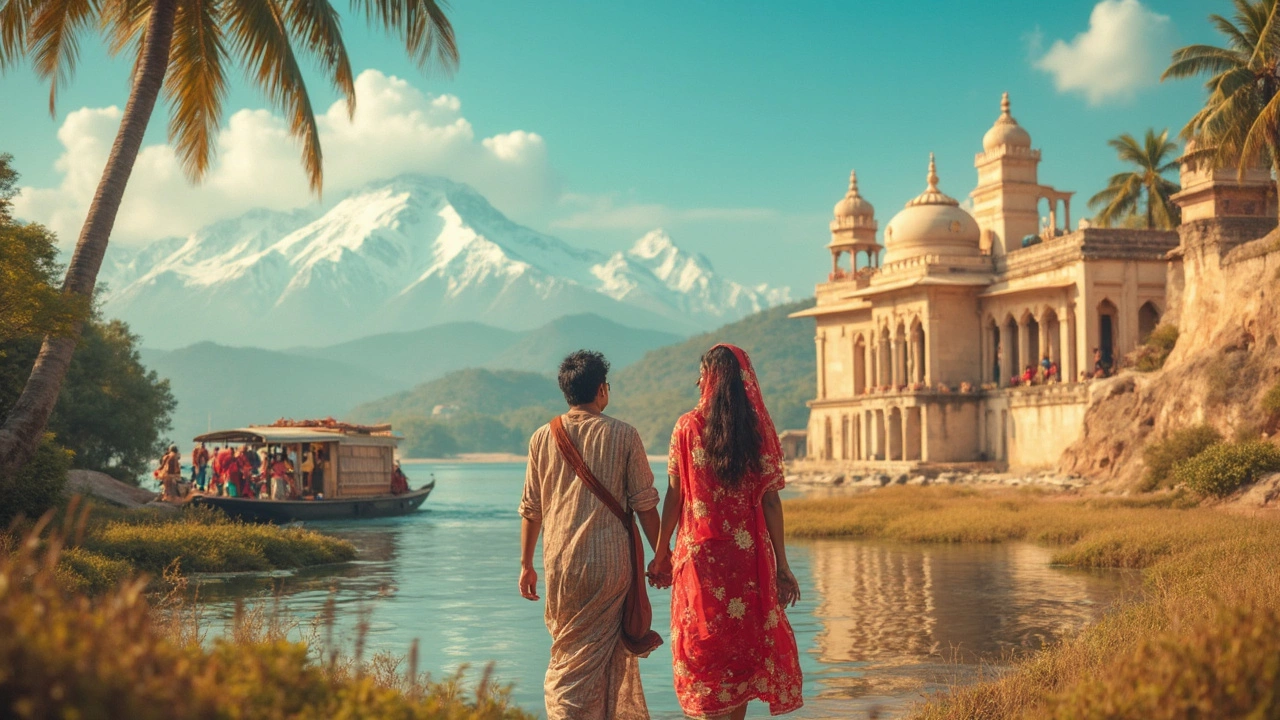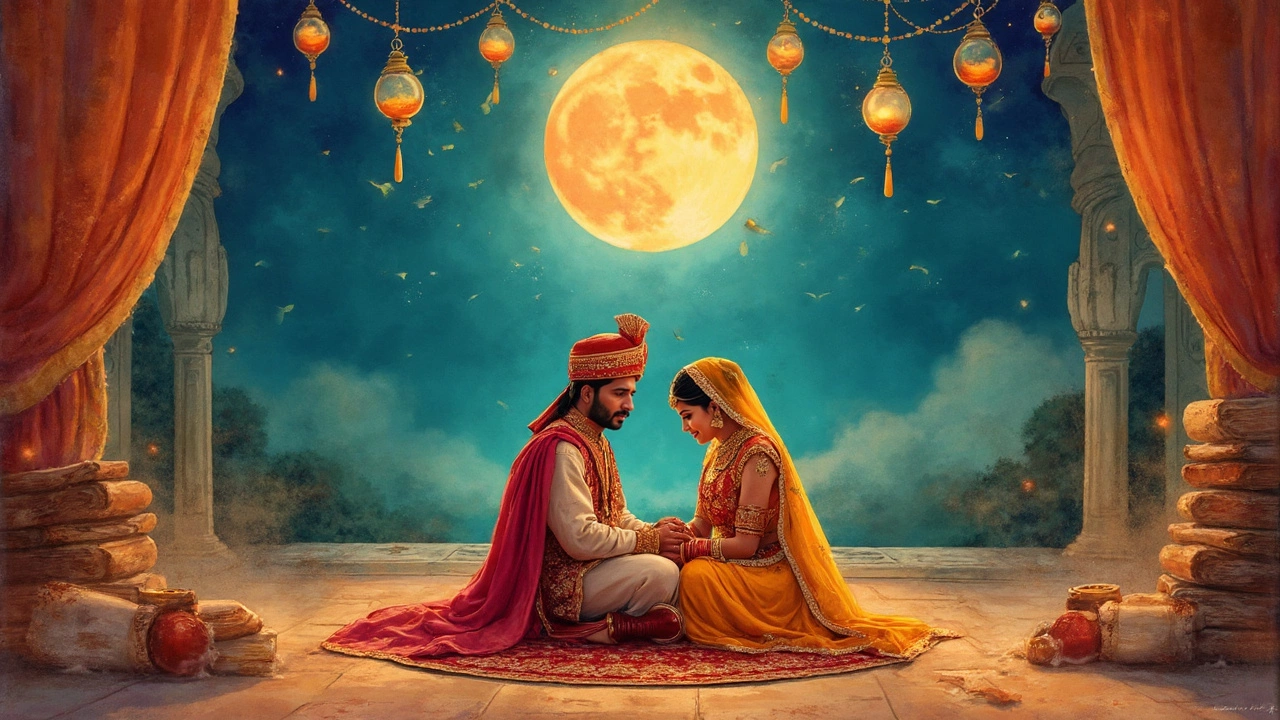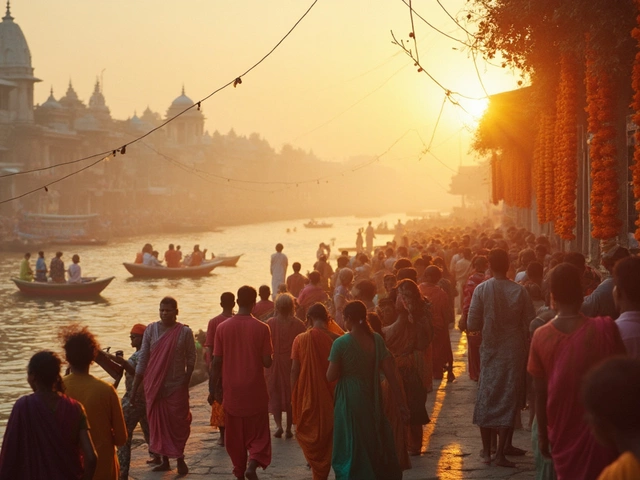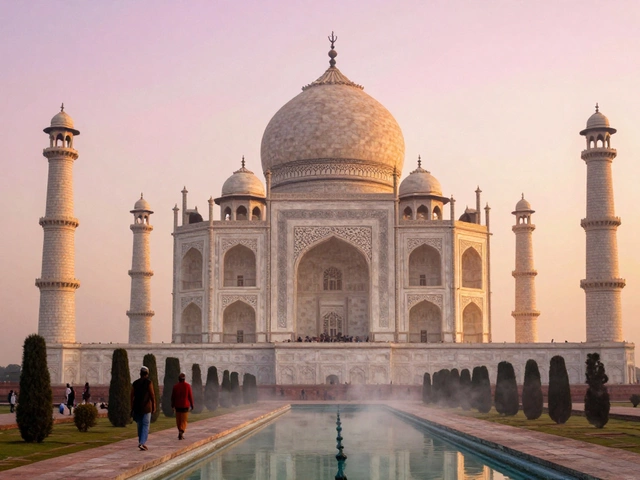The word “honeymoon” feels sweet and dreamy, but its story is sort of weird—and actually not about beaches or bouquets at all. Back in old England, a month after the wedding was all about drinking mead (yeah, honey wine). Folks believed this special drink boosted love and luck in those first weeks together. That jam-packed sweet month? You guessed it: honeymoon.
But there’s more. In some ancient cultures, the honeymoon wasn’t just a vacation—it was a hiding period. Newlyweds would literally disappear so nosy relatives or ex-suitors couldn’t find them. Not exactly the spa weekend most couples dream of now, right?
Today, pairing history with travel makes your post-wedding trip even more meaningful. Knowing the roots (and weirdness) behind the word might give you some fun conversation starters—especially if you’re still choosing where to go or want to do something different from the usual resort experience.
- The Odd History of 'Honeymoon'
- From Old Traditions to Beach Getaways
- Popular Myths and Fun Facts
- How Modern Couples Celebrate
- Fresh Ideas for Your Own Honeymoon
The Odd History of 'Honeymoon'
If you think the word honeymoon was always about sandy beaches or private villas, that’s not the case. The word goes way back to 16th-century England. It’s a mix of 'honey,' which stands for the sweet time right after the wedding, and 'moon,' signaling that this sweetness might not last forever. It’s actually kind of pessimistic, hinting that things might get less exciting after the first month. I was honestly surprised the first time I dug into this—it's really not about romantic getaways at all.
In old times, 'honeymoon' was pretty literal. Newlyweds drank mead (a honey-based alcohol) every day for about one moon cycle, or 30 days. They did this because people believed mead could boost fertility and happiness, and probably because it was the only sweet treat around for most folks back then. Here’s a quick rundown of how the idea spread and evolved:
- Ancient Babylon: The father of the bride would supply mead to the groom each night for a month after the wedding, hoping for a grandchild by the next moon.
- Medieval Europe: Newlyweds sometimes hid out after their wedding, especially if their families weren’t all on board with the marriage or if there was a threat from other suitors. The honeymoon was actually a low-key way to escape drama.
- By the 19th century: Wealthy couples in the UK started traveling after their weddings, but the idea of the honeymoon was still pretty new. The getaway was often a chance to visit family who couldn’t make it to the wedding, not just for romance.
Fast-forward to today, and the meaning has flipped. Now, everyone thinks of beautiful honeymoon destinations—not dodging angry uncles or sipping homemade booze. The original meaning might sound outdated, but it explains why 'honeymoon' is about much more than a post-wedding trip. It's like carrying a quirky piece of history into your own travels.
From Old Traditions to Beach Getaways
For centuries, a honeymoon wasn’t about tanning on tropical sand. In medieval Europe, the main goal was privacy and, honestly, to seal the deal—getting the couple alone to bond right after all the public wedding commotion. The “moon” in honeymoon was actually about that first month after marriage, considered key for building a new family.
Fast-forward to the 1800s in Britain. Wealthy couples got the idea of a “bridal tour.” After tying the knot, they’d visit relatives who couldn’t make it to the ceremony. It wasn’t romantic at first, but these trips grew fancier, mixing sightseeing with visiting family. The Victorian era made travel cool—trains, steamships, even early fancy hotels. Suddenly, escaping for a week or two sounded like a good time, not a chore.
By the early 1900s, honeymoons went worldwide. New York newlyweds flocked to Niagara Falls for its iconic status, while Paris, Venice, and Swiss towns drew European couples. The shift toward relaxation and romance really took off after World War II. Regular folks could now save up, take time off, and book their own adventures—not just the rich and titled.
Here's a quick look at popular honeymoon destinations by decade:
| Decade | Hotspots |
|---|---|
| 1920s | Niagara Falls, Atlantic City |
| 1950s | Hawaii, Riviera, Rome |
| 1970s | Caribbean, Mexico, Greek Islands |
| 2000s | Maldives, Bali, Thailand |
| 2020s | Iceland, Santorini, Bora Bora |
Today’s couples have endless choices—from mountain cabins to all-inclusive beach escapes. This shift means you don’t have to follow old traditions. Instead, you can pick a spot that fits your style, interests, and (let’s be real) your budget. Whether your thing is hiking, city hopping, or just lazying around with room service, the honeymoon can now be anything you want it to be.

Popular Myths and Fun Facts
People toss around all kinds of wild stories about why we call it a honeymoon. Some say it’s about staying sweet with your partner forever. But that’s not exactly true. It actually started as a literal month of honey wine—no romance required unless you really love medieval drinks.
One curious myth is that couples once spent their honeymoon hiding from the bride’s family. You can blame Viking customs for that one. They’d sometimes keep the new wife hidden so her family couldn’t take her back. Not the vibe you want on your honeymoon now, but that’s real history for you.
Here are a few facts that most folks don’t know:
- The term “honeymoon” popped up in English writing as early as the 16th century. It described how newlyweds’ love tends to “wane like the moon.” Pretty harsh, right?
- In France, newlyweds got a month’s worth of mead (which is just honey wine) from the bride’s dad. Imagine your in-laws dropping off free booze for an entire month!
- Today, the honeymoon is big business. According to a 2023 Statista report, the average American honeymoon cost hit about $5,000—yup, that’s about double the cost from ten years earlier.
| Country | Average Honeymoon Spend (USD, 2023) |
|---|---|
| USA | $5,000 |
| UK | $4,200 |
| Australia | $3,850 |
Writers and historians still argue about the “true” origin. As folklorist Mark Forsyth said,
“The honeymoon was not about celebrating your marriage, but about hoping it would last. If you made it past the first month, you were probably good for a lifetime.”
So, next time someone asks about your honeymoon, you’ve got some solid facts—not just warm fuzzies—to toss back their way.
How Modern Couples Celebrate
Ask a dozen friends what their honeymoon looked like, and you'll probably get wildly different tales. Today's couples are skipping cookie-cutter trips and personalizing their escapes to match their vibe, budget, and interests. No more assumptions that everyone dreams of a tropical beach week—unless that’s your thing, of course.
Plenty of couples opt for adventure—think hiking in Patagonia, exploring temples in Southeast Asia, or road-tripping across New Zealand. According to Expedia’s 2024 Honeymoon Travel Trends report, about 42% of newlyweds now choose something action-packed over just lounging by a pool.
Multi-stop trips are also big these days. It’s not unusual to string together city breaks, nature adventures, and even a stop in the bride or groom’s hometown. Here’s what’s driving these choices:
- Personalization: Couples want to create memories that match their shared interests, not just follow tradition.
- Experiences Over Things: Cooking classes in Italy, surfing lessons in Costa Rica, or a hot air balloon ride in Cappadocia beat box-ticking sightseeing for many.
- Mini-moons: After a big wedding, lots of folks jump into a short trip right away and save the "big" getaway for later. It’s easier on the wallet and fits busy work schedules.
- Groupmoons: Yes, some couples bring friends or family for part of the trip—think friends joining for a few days in Ibiza or family tagging along in Greece, then splitting off for couple time.
Sustainable travel is another buzzword. The Knot’s 2023 report found about 29% of couples try to keep their honeymoon destinations eco-friendly—like choosing local hotels, skipping flights for trains, or supporting local projects.
And let’s not forget budget. Here’s a quick look at what couples are spending lately:
| Average Spend (USD) | Trip Length (days) |
|---|---|
| $5,100 | 8 |
As travel expert Carolyn Spencer Brown at Cruise Media puts it,
"The modern honeymoon isn’t about the destination, it’s about the experience of starting new traditions together."
If you want a unique honeymoon, ask yourselves what actually kicks off your marriage in a way that feels real—not just Instagram-ready. Whether it’s a tent in the mountains or a loft in Lisbon, it’s all about creating a memory that means something to both of you.

Fresh Ideas for Your Own Honeymoon
If you’re bored just thinking about the same old beach resort, you’re not alone. Couples in 2025 are ditching cookie-cutter trips and looking for honeymoons with more excitement and meaning. Here’s how to plan a honeymoon that feels fresh—and actually fits your vibe.
Try an ‘adventure-moon.’ Instead of lounging all week, pick a spot where you can both learn something or get moving. Think ziplining in Costa Rica, hiking in New Zealand, or even taking a cooking class together in Italy. According to a recent survey from Booking.com, over 40% of newlyweds now add some kind of unique experience to their honeymoon destinations list.
If you want romance without flying far, look local. Road trips around your home country can reveal gorgeous places you’ve missed. Plus, skipping the international flight saves money and stress. Right now, places like Asheville in North Carolina and Banff in Canada are gaining buzz for their mix of outdoorsy fun and cozy food scenes.
Some couples love making a difference on their trip. Voluntourism—helping out with anything from sea turtle conservation to English teaching—can add a real sense of purpose. Just make sure you’re picking a reputable group or non-profit, not a business that’s all show. Doing your research up front pays off big time.
Is pampering more your style? New spa resorts in Bali, Thailand, and even Portugal are popping up with private pools just for couples, but also cool activities like yoga and guided meditation. It isn’t all massages and room service anymore.
If you’re into data, check out this quick look at top trending honeymoon destinations in 2025 based on recent booking stats:
| Destination | Vibe | Why It's Hot |
|---|---|---|
| Bali, Indonesia | Chill + Culture | Wellness retreats, budget-friendly luxury |
| Amalfi Coast, Italy | Foodie + Scenic | World-known food, unreal coastlines |
| Kyoto, Japan | Cultural + Tranquil | Cherry blossoms, temples, peaceful gardens |
| Tulum, Mexico | Eco + Relax | Boutique hotels, wellness experiences |
The key: ditch the old-school script and make your honeymoon your own. It’s all about that first chapter together feeling memorable instead of cookie-cutter. Don’t be shy about skipping traditions if they don’t fit, or mixing two totally different travel ideas if that sounds more like you.









